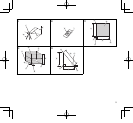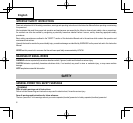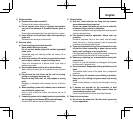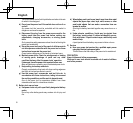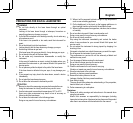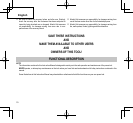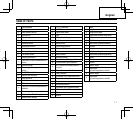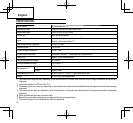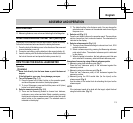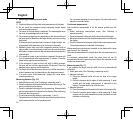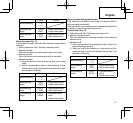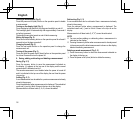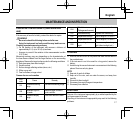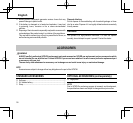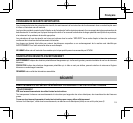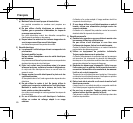
13
English
ASSEMBLY AND OPERATION
APPLICATIONS
○
Measuring distance, area, volume and side length at building sites
INSERTING/CHANGING THE BATTERY (See Fig. 4)
The battery is not installed in the instrument when it leaves the factory.
Follow the instructions below and insert the battery before use.
1. Press the hook of the battery cover in the direction of the arrow and
remove the battery cover. (a)
2. Connect a new battery, paying attention to the correct polarity. (b)
3. Insert the battery with the terminal at the bottom. Match the hook to
the hole in the main unit and press the battery cover shut. (c)
HOW TO USE THE DIGITAL LASER METER
Operation
WARNING
Never look directly into the laser beam or point the beam at
anyone.
If the light gets in your eyes, it may damage your eyes.
1. Turn on the power (Fig. 1, 2)
○
Press the power on/off (clear) button on the operation panel,
and when the power is turned on, the display appears.
○
To turn off the power, press and hold the power on/off (clear)
button for at least 2 seconds.
2. Select a measuring mode (Fig. 2, 5)
○
There are fi ve measuring modes to choose from: distance,
continuous, area, volume and side. Select a mode by pressing
the distance/continuous measurement select button and mode
select button on the operation panel. The selected mode is
indicated on the display.
○
The default setting is the distance mode. You can change the
selected mode or measure in the selected mode for as long as
the power is on.
3. Select a unit (Fig. 2, 3)
Press the unit select button on the operation panel. There are three
units to choose from: feet, inches and meters. The selected unit is
indicated on the display.
4. Select a reference point (Fig. 2, 6)
○
There are three reference settings to choose from: front, W1/4
socket hole and rear.
○
Select a reference point by pressing the Measuring reference
point select button. The selected reference point is indicated
on the display.
○
When the power is turned on, the last reference point that was
set is selected. If necessary, select a diff erent reference point.
Examples of measuring using diff erent reference points
1
Measuring using front reference point (Fig. 7)
Place the front (reference point) of the instrument against the
measuring surface.
2
Measuring using rear reference point (Fig. 8)
Place the rear (reference point) of the instrument against the
measuring surface.
3
Measuring using the W1/4 socket hole (for the tripod) as the
reference point (Fig. 9)
Use the center of the socket hole for attaching the tripod as the
reference point.
NOTE
If the instrument needs to be level with the target, adjust the level
using the bubble tube. (Fig. 10)



